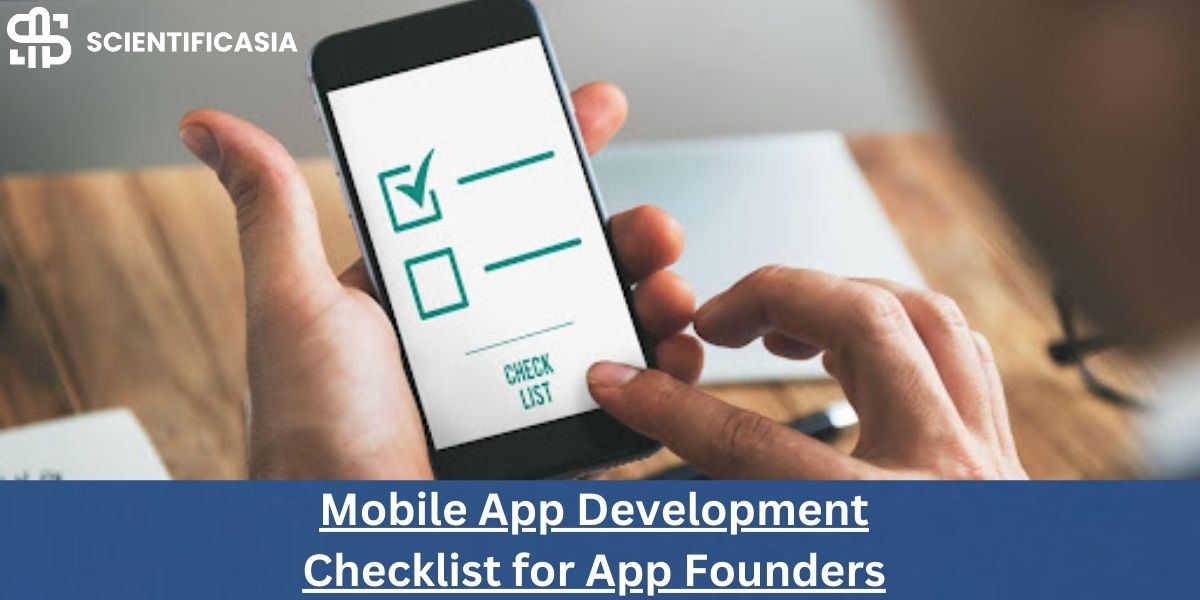As an opportunist and aspiring technopreneur, you just had your lightbulb moment for a mobile app that could solve a pressing problem for your target audience. What’s next? You don’t just start coding; you build a complete business plan and see if the idea is financially, technically, and legally viable. Yes, and if these painstaking validation steps don’t haunt you and you are motivated enough to embark on a mobile app development venture that will be lengthy, time-consuming, challenging, and demanding, you are on the right track. To support future epic app startups, here is a mobile app development checklist that will prepare founders like you for:
- Researching and refining the app development idea
- Deciding on the platform, tech stack, and monetization
- Hiring a winning mobile app development company in Dubai
- Outlining design and development KPIs for the app
- Highlighting steps for testing the mobile app
Let’s start!
Kicking Off Mobile App Development
Define App Objectives
Clearly outline the purpose and goals of your mobile app. Identify key features and functionalities that will fulfill your business objectives and provide value to users.
Platform Selection
Determine whether you’ll develop a native app (iOS, Android) or opt for cross-platform development frameworks like React Native or Flutter. Think about factors such as the target audience, budget, and development resources.
Market Research
Start market research to identify competitors, user demographics, and trends relevant to your app idea. Analyze existing apps in your industry to identify gaps and opportunities so you can differentiate and penetrate the market.
Monetization Strategy
Decide how your app will make money: whether it’s through app purchases, in-app purchases, subscriptions, advertising, or a combination of these.
Technical Requirements
Decide on the technical requirements such as backend infrastructure, APIs, databases, and third-party integrations that you’ll need to support your app’s functionality. If you are from a non-tech background, consider skipping this step and discussing it with your mobile app developers in Dubai during the discovery sessions.
Budget and Timeline
Establish a realistic budget and timeline for your mobile app development project. You have to think about factors like full-cycle app development costs, testing and marketing timelines, and then post-launch and ongoing maintenance. Set clear milestones and deadlines with these KPIs to track progress. You may have to revisit this part after outsourcing the app development to a company. That’s because they’ll contribute according to their availability and your budget considerations.
Hiring a Mobile App Development Team
Determine Development Approach
Decide whether to hire an in-house development team, outsource to a mobile app development agency, or work with freelancers. Think about your project requirements and budget. In-house recruitment is most expensive because of the benefits and wages system, while outsourcing comes with a fixed cost. Freelancers are seemingly cheaper, but you’d spend more time and money working with one after the other.
Research Potential Partners
Assuming that you plan to go with an agency, I recommend you explore mobile app development companies with relevant expertise and a strong portfolio of successful projects. Think about industry experience, technical skills, and client testimonials.
Check Clutch and GoodFirms
These mobile app development companies often maintain a strong presence on B2B independent review platforms like Clutch, DesignRush, GoodFirms, and Sortlist. So when shortlisting the agencies, look at what customers have to say about them on these platforms.
Review Proposals
Request proposals from the shortlisted agencies. Ask them to discuss their development approach, for example, agile, timelines, cost estimates, and documented deliverables. It would be ideal to schedule a 1:1 virtual or physical meetup to discuss the development process stage-wise, communication schedule, channel, and project management tools. Think about time zones, working dynamics, and cultural fit throughout to make up your mind, because this is the team you’d be working with throughout development, and it’s a matter of no less than six months.
Check Case Studies
Companies often publish their success stories from their previous projects on their official websites. Go to these projects and check the apps for user experience, user interface design, monetization, results and impact, number of downloads, and overall look and feel. Pay attention to any patterns of feedback you find in the ratings and reviews section in the Google Play and App Store. If you’re looking for the best web development company in Dubai, it’s essential to thoroughly assess their portfolio and client testimonials to ensure their expertise aligns with your needs.
Legal Considerations
Once you are sold on working with a specific company or development team, review their set of contracts carefully to understand the legal bindings and procedures. Check clauses about project scope, deliverables, payment terms, and intellectual property rights.
Non-Disclosure Agreement
Depending on the depth of your app idea and its existing awareness and popularity in the market, you would want your developer to maintain a certain level of confidentiality about your app project. See if the contract has clauses about maintaining confidentiality about ideas and the development process. This could also include clauses about white labeling the app code, intellectual property rights of the source code, design assets, etc.
App Design and Development KPIs
User Experience (UX) Design
After finalizing the team, you’ll work directly alongside the project manager. Start with technical and business discovery, during which the designers create feature maps and wireframes to outline the user journey.
Mockups and prototypes
Ask your designers to create app screen mockups to visualize the user interface and user experience flow of each screen of your mobile app. Also, ask them to build a clickable, high-fidelity prototype to comment on intuitive navigation, clear CTAs, and interactions.
Agile Development
Modern mobile app development companies in Dubai now follow an agile development approach based on scrum methodologies. These are sprints with iterative cycles of design, development, testing, and feedback. If your team is transparent and has a system to keep you posted in real-time, you can ask them for sprint schedules and deliverables of each sprint session.
Frontend Development
In this step, designers and developers work closely to translate design mockups into functional UI elements and interactive features. This is the face of your mobile app that directly interacts with users. In this stage, you must test the coded front for usability, accessibility, and performance. Remember to prioritize exceptional user experience and delivery of value throughout the development process.
Backend Development
While this is more technical and requires the efforts of a senior backend developer or testing analysts, you too can test the quality of the backend by asking questions about the infrastructure that supports the primary app functionality. Talk about features like user authentication, data storage, and server-side logic. Tell your developers to ensure the scalability, reliability, and security of backend systems.
API Integration
By this stage, your app will be ready to integrate database and external services plugins. Factor in all the necessary third-party services your app will use. For example, maps, payment gateways, e-commerce capacities, and so on. Ensure they blend well with the app’s front and backend and work well in traffic and non-traffic hours.
Test The App
After completing development, the testing team and you are supposed to test the performance of the mobile app on five fronts: cross-platform compatibility on diverse devices and screens, responsiveness and loading speed, functionality of features, security, and handling data.
Conclusion
After testing, mobile app developers typically document error logs and fix the identified bugs. During this stage, the app is ready to be deployed on Google Play and App Store. But another important stage comes after your mobile app goes live in the stores. You have to monitor the performance and technically support the users in accessing and navigating the app. You have to market the app for user acquisition and scale the revenue for business success. While this does seem a challenging venture, app development altogether is a financially rewarding and super lucrative business across the Middle East.











